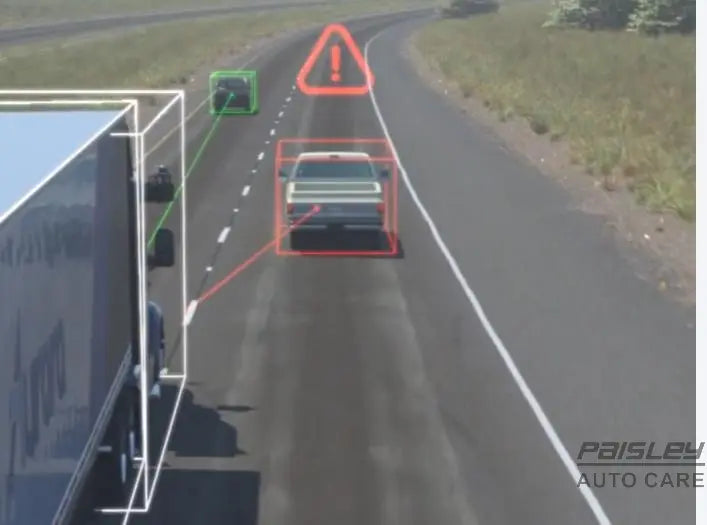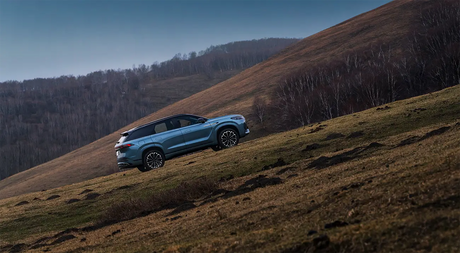Aurora: Revolutionising Self-Driving Technology and Transportation
In the rapidly evolving world of autonomous vehicles, Aurora is transforming the future of transport by leveraging cutting-edge technology to enhance safety, efficiency, and reliability across logistics and passenger services. At the heart of Aurora's innovation is the Aurora Driver, a highly adaptable and powerful autonomous driving system engineered to handle the complexities of real-world driving. This blog will explore how Aurora’s technology works, its potential benefits for industries, and how it aligns with the standards of safety and innovation at Paisley Autocare.

Understanding the Aurora Driver
The Aurora Driver integrates a unique blend of sensors, including lidar, radar, and camera systems. This combination provides a multi-faceted perception of the driving environment, allowing the vehicle to process and adapt to varying conditions with precision. Each component in this system plays a crucial role:
- Lidar: Utilises laser pulses to create 3D maps of the environment, allowing for high-definition perception of objects and road layouts.
- Radar: Offers reliable detection of objects and movement, especially beneficial in adverse weather conditions where vision may be limited.
- Cameras: Provide detailed visual information, enabling object recognition, road sign reading, and lane detection.
The Aurora Driver’s adaptability allows it to be fitted onto different vehicle models, from commercial trucks to smaller passenger vehicles, marking a significant shift in how we perceive transportation's future.

Key Benefits of Aurora's Self-Driving Technology
Aurora’s autonomous technology is poised to bring transformative benefits across multiple sectors:
-
Enhanced Safety: Human error accounts for the vast majority of road accidents, and by removing or reducing the need for a human driver, Aurora Driver could significantly cut accident rates. The Driver's sensors and machine learning algorithms allow it to detect hazards faster than human reaction times, ultimately aiming to provide safer roads.
-
Increased Efficiency in Logistics: For freight companies, the impact of autonomous vehicles could be substantial. Automated driving systems can optimise fuel consumption, avoid traffic congestion, and ensure deliveries are timely, even with minimal human intervention.
-
Reduced Costs: Lower accident rates and increased fuel efficiency contribute to reducing long-term expenses for both freight and passenger transport providers. While initial costs for installing autonomous systems may be high, the long-term savings potential is considerable.
Aurora's Collaborations and Real-World Applications
Aurora has established partnerships with prominent industry players, including Volvo and Paccar. These collaborations are not only a testament to the potential of the technology but also demonstrate Aurora's commitment to building reliable systems that meet industry standards. Real-world testing, such as in long-haul trucking routes, allows Aurora to fine-tune the system's responses to varied traffic scenarios and weather conditions.
In freight applications, the Aurora Driver can operate nearly continuously, potentially alleviating driver shortages and lowering overhead costs in the logistics sector. For passenger vehicles, this technology could eventually reduce congestion, improve accessibility, and lead to a cleaner environment by enabling efficient, shared autonomous vehicles.

Safety Measures and Regulatory Compliance
Ensuring safety is a top priority in the autonomous driving industry, and Aurora has structured its development processes to align with stringent safety standards. The company rigorously tests the Aurora Driver to simulate complex real-world scenarios, training the system to handle everything from unexpected pedestrian crossings to extreme weather conditions.
Safety Comparison Table: Human-Driven vs. Aurora-Driven Systems
| Feature | Human-Driven Systems | Aurora-Driven Systems |
|---|---|---|
| Reaction Time | Avg. 1-2 seconds | Milliseconds |
| Environmental Perception | Limited in low visibility | Enhanced through lidar, radar, and cameras |
| Fatigue | Affects concentration | Non-applicable |
| Accident Rate | Higher due to human error | Potentially lower with machine learning |
| Adaptability to Conditions | Variable, depends on driver | Consistently optimised by sensors |
| Operational Costs | Varies with accidents & fuel | Lower in long-term due to efficiency |
Future of Self-Driving Tech in Everyday Life
Aurora’s advancements open the door to a future where self-driving vehicles are part of everyday life, from autonomous taxis to goods transport. This transition could drastically alter the transportation industry and even Paisley Autocare, as repair and maintenance needs evolve to focus on complex sensor systems, software updates, and specialised parts.
Concluding Thoughts
The road to fully autonomous vehicles is still under development, with several technological and regulatory hurdles. Yet, Aurora’s dedication to creating a safe and reliable driving system marks a significant step forward in that journey. For Paisley Autocare, being informed on these innovations is essential, as the rise of autonomous technology will eventually influence automotive repair trends and standards. As Aurora continues to refine its technology, the future of safer, more efficient, and automated transportation becomes increasingly feasible.
For more on Aurora’s technology, visit their website at Aurora.




